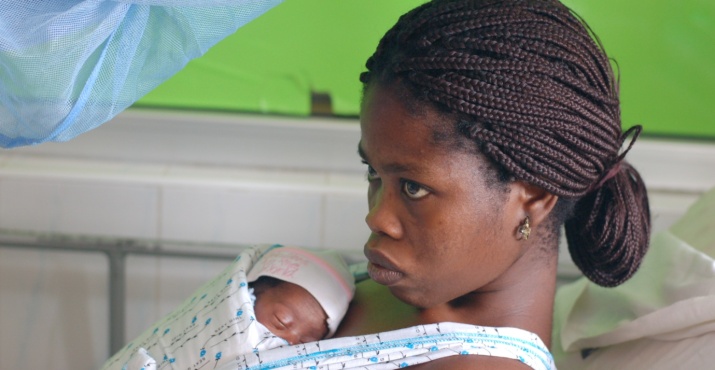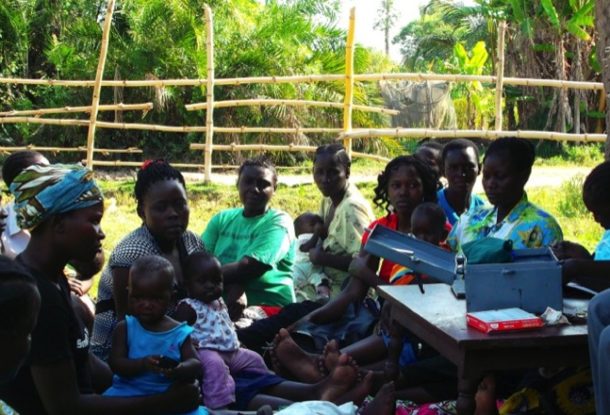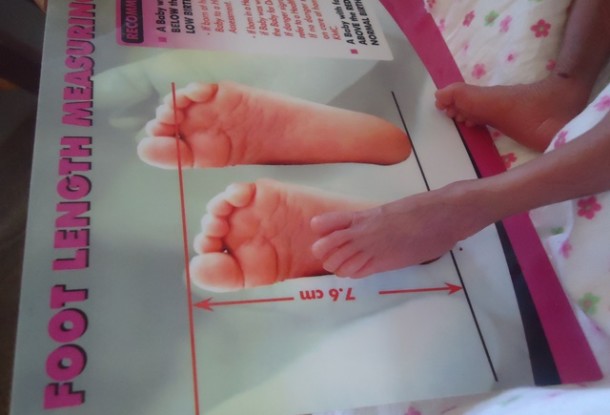Innovation Summary
Working in Ghana, this project will introduce ways of alleviating pain for infants born prematurely and treated in special neonatal intensive care units (NICU)s — the tiniest of children who experience moderate to severe pain several times daily due to diagnostic and therapeutic procedures such as blood sample collections and medicine injections. Severity of brain defects and neurodevelopmental problems found later among children born preterm can be linked to the number of painful procedures experienced in the NICU. [1]
The project will introduce Ghanaian caregivers and parents to an integrated “Toolkit for Minimizing the Impact of Pain in Infants,” adapted from successful practices in Canada. The toolkit will include:
- Kangaroo care, where infants are held in skin-to-skin contact with a parent.
- Facilitated tucking, where infants are held in a fetal-like position to provide support and boundaries.
- Breastfeeding.
Combined, these interventions have a demonstrated cumulative pain-relieving effect.
Gallery
Impact
The ultimate aim is to build awareness and interest in the toolkit to improve pain assessment, management and clinical outcomes.
The key indicators of impact are:
- Acceptability, fidelity, feasibility, cost and sustainability of the toolkit.
- Effectiveness outcomes of the toolkit will be assessed by the proportion of infants who have their pain assessed and managed. The clinical outcome of this study is to measure pain intensity.
- 300 infants will be exposed to more than 1 pain management strategy.
- 30 NICU nurses will be trained.
Innovation
A toolkit of evidence-based pain relieving strategies and knowledge translation (KT) approaches (e.g. reminders, educational materials) is proposed to outline the process of implementing research into practice to improve outcomes in newborn infants.
A toolkit provides the opportunity for engaging end users and sharing step-by-step processes and/or resources and tools to instruct users on how to systematically implement and evaluate new and novel interventions. Toolkits tailored to meet the user’s needs may be an effective medium for KT to a variety of stakeholders including policy makers and health care professionals.
The “Toolkit to Minimize Pain in Infants” will include key steps to change practice, educational materials, reminders, and implementation strategies promoting the use of evidence-based interventions to minimize procedural pain (e.g., kangaroo care (KC) where babies are held in skin-to-skin contact with a parent; facilitated tucking (FT) where infants are held in a fetal-like position to provide support and boundaries; breastfeeding.
These interventions are simple, inexpensive, and can be easily learned and implemented by nurses caring for these infants.
Collaboration
Funders
- Grand Challenges Canada
Implementation:
Key Drivers
Support of key administrative, educational and clinical stakeholders to improve knowledge, skills and outcomes.
Challenges
Delays in obtaining research ethics approval, hiring of research personnel, travel to study site.
Continuation
The toolkit will be offered to frontline staff nurses first in the NICU in the Korlebu Hospital (housing approximately 75 infants at a time or 2000/year); then scaled up to other neonatal care units (e.g. Ridge, 37 Military and LA- all with about 25 babies at any given time) in Ghana.
Evaluation Methods
Toolkit implementation outcomes will be assessed at the individual health care professional (e.g. acceptability, fidelity) and hospital unit (e.g. feasibility, cost, sustainability) levels. Effectiveness outcomes of the toolkit include (a) pain management (b) pain intensity.
The following implementation outcomes will be assessed:
- Acceptability (perception amongst stakeholders that the toolkit is agreeable, palatable and satisfactory) will be measured by asking users to assess the usefulness of the Toolkit components and provide suggestions for improvement.
- Feasibility (extent to which the toolkit can be successfully used within a particular setting) will be measured by assessing the clarity of the instructions for using the Toolkit, the structure, format, and the ease of interpreting the information from the Toolkit and incorporating the components into the practice setting.
- Sustainability (extent that the newly implemented toolkit is maintained or institutionalized within the setting’s ongoing stable operations) will be assessed by determining the length of time (during the project duration) that the toolkit components are used by nurses and parents.
Effectiveness outcomes of the toolkit will be assessed before and after – implementation of the toolkit and include:
- Pain management will be indicated by the proportion of infants within the hospital unit where one or more of the pain management strategies – kangaroo care, breastfeeding, facilitated tucking – was implemented during a painful procedure.
- Pain intensity (how much the procedure hurt) will be assessed using the Premature Infant Pain Profile – Revised (PIPP-R) [2,3] on 75 infants in the NICU where the toolkit is implemented. The PIPP-R is a validated infant pain assessment measure where nurses observe facial expression and changes in physical indicators (i.e. heart rate) to determine pain intensity. Nurses will be taught how to use this measure by the project co-coordinator.
Barriers and Facilitators
A series of 3 focus groups will be held with health care professionals, educators and managers/ policy makers following implementation of the toolkit to determine their overall impression of the toolkit; especially focusing on barriers and facilitators to implementation at the educational, clinical and administrative levels. In particular, anticipated issues regarding scale-up of the toolkit beyond the initial neonatal unit in Accra will be discussed. An interview guide will be developed to ensure consistency across focus groups, which will be conducted by the Project Co-ordinator and Project Lead.
References
- Brummelte S, et al. (2012) Procedural pain and brain development in premature newborns. Ann Neurol. 71(3):385-96.
- Stevens, B., et al. (1996) Premature Infant Pain Profile: development and initial validation. Clinical Journal of Pain. 12(1), 13-22.
- Stevens, B., et al. (2013) The Premature Infant Pain Profile-Revised (PIPP-R): Initial validation and feasibility. Submitted to the Clinical Journal of Pain.
Resources
-
Research
-
American Academy of Pediatrics Committee on Fetus and Newborn, Canadian Paediatric Society Fetus and Newborn Committee. Prevention and management of pain in the neonate: An update. Pediatrics. 2006;118(5):2231-224.
-
Carbajal R, Rousset A, Danan C, et al. Epidemiology and treatment of painful procedures in neonates in intensive care units. JAMA. 2008;300(1):60-70.
-
Johnston CC, Barrington KJ, Taddio A, Carbajal R, Filion F. Pain in Canadian NICUs: Have we improved over the past 12 years? Clin J Pain. 2011;27(3):225-232
-
Lee, G., Yamada, J., Kylolo, O., Shorkey, A., & Stevens, B. (2014, Feb 2). Pediatric clinical practice guidelines for acute procedural pain: A systematic review. Pediatrics. Advance online publication. doi:10.1542/peds.2014.4-digit number.
-
Stevens, B., Abbott, L., Yamada, J., Harrison, D., Stinson, J., Taddio, A., Barwick, M., Latimer, M., Scott, S., Rashotte, J., Campbell, F., Finley, G.A., & CIHR Team in Children's Pain. (2011). Epidemiology and management of painful procedures in children in Canadian hospitals. Canadian Medical Association Journal, 183(7), E403-410. doi:10.1503/cmaj.101341.
-
Stevens, B., Harrison, D., Rashotte, J., Yamada, J., Abbott, L., Coburn, G., Stinson, J., Le May S., & CIHR Team in Children's Pain. (2012). Pain assessment and intensity in hospitalized children in Canada. Journal of Pain, 13(9), 857-865.
-
Stevens, B., Yamada, J., Estabrooks, C., Stinson, J., Campbell, F., Scott, S., Cummings, G., & CIHR Team in Children’s Pain. (2013). Pain in hospitalized children: Effect of a multidimensional knowledge translation strategy on pain process and clinical outcomes. PAIN, 155(1), 60-8.
-
-
Instruments & Batteries
-
Chart Audit Tool. Process Evaluation Checklist. Feasibility Tool; Gross/Fine Motor Skills. Neonatal Pain Knowledge and Attitudes Questionniare. Developed In-House
-





